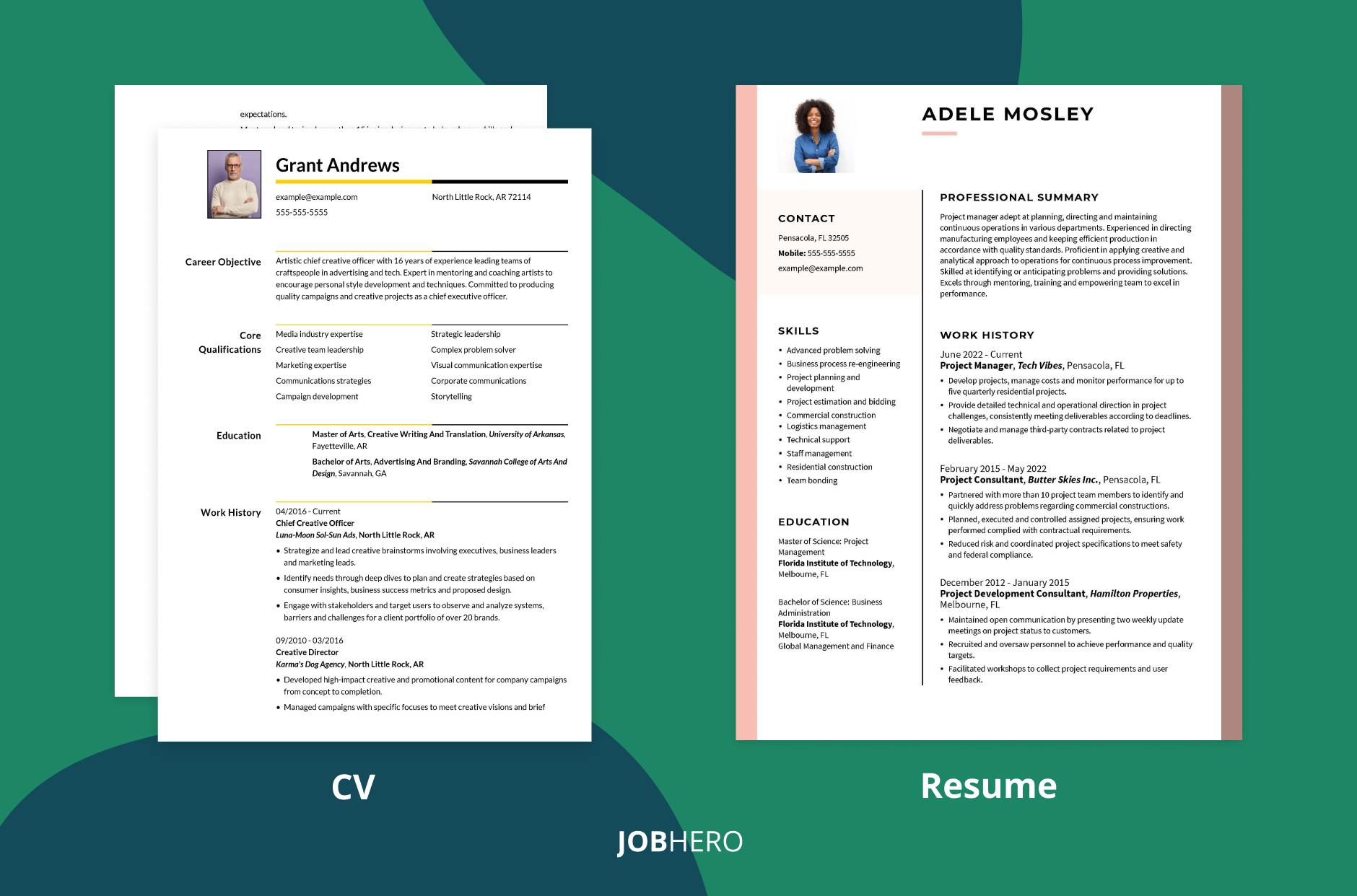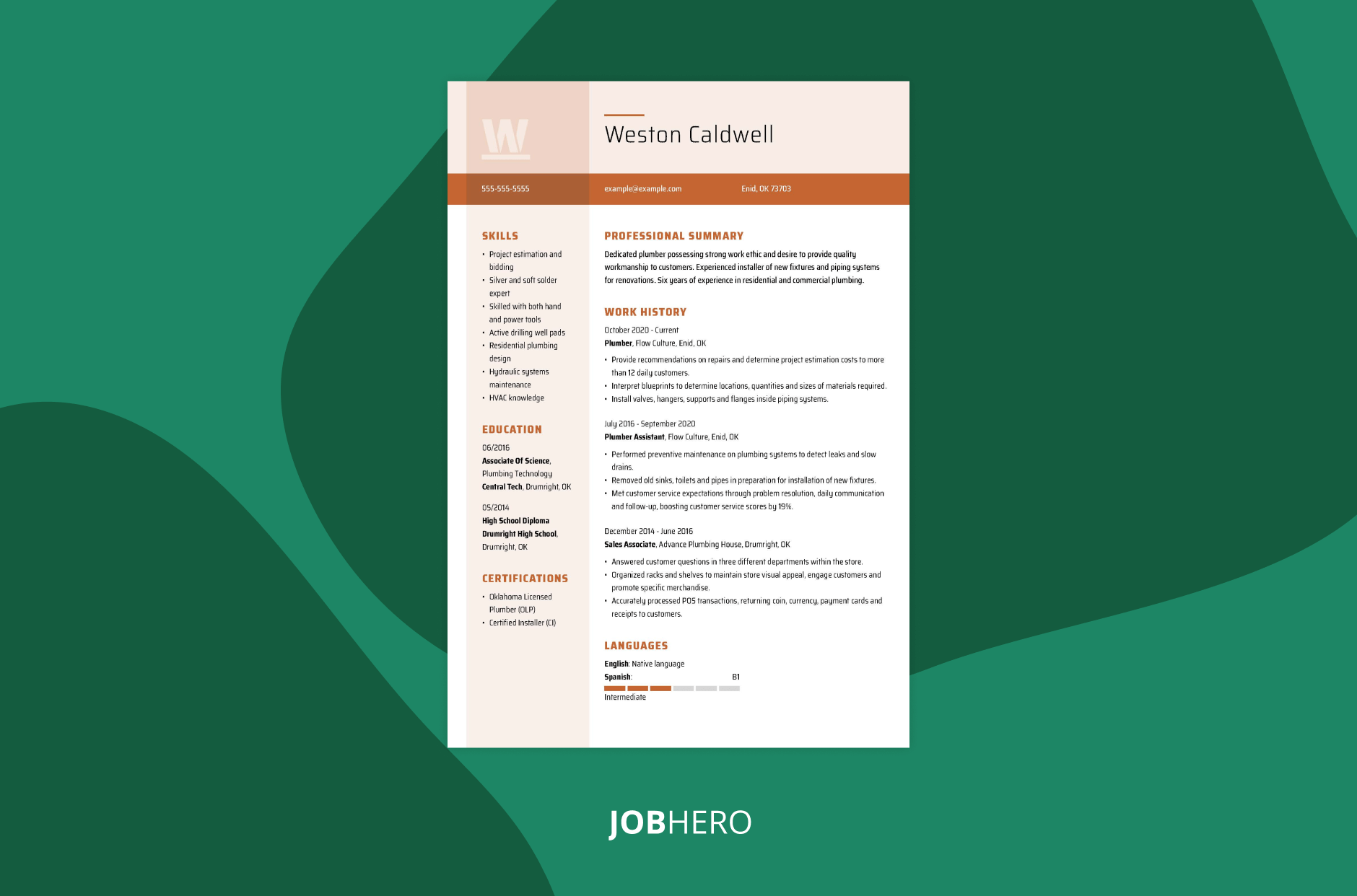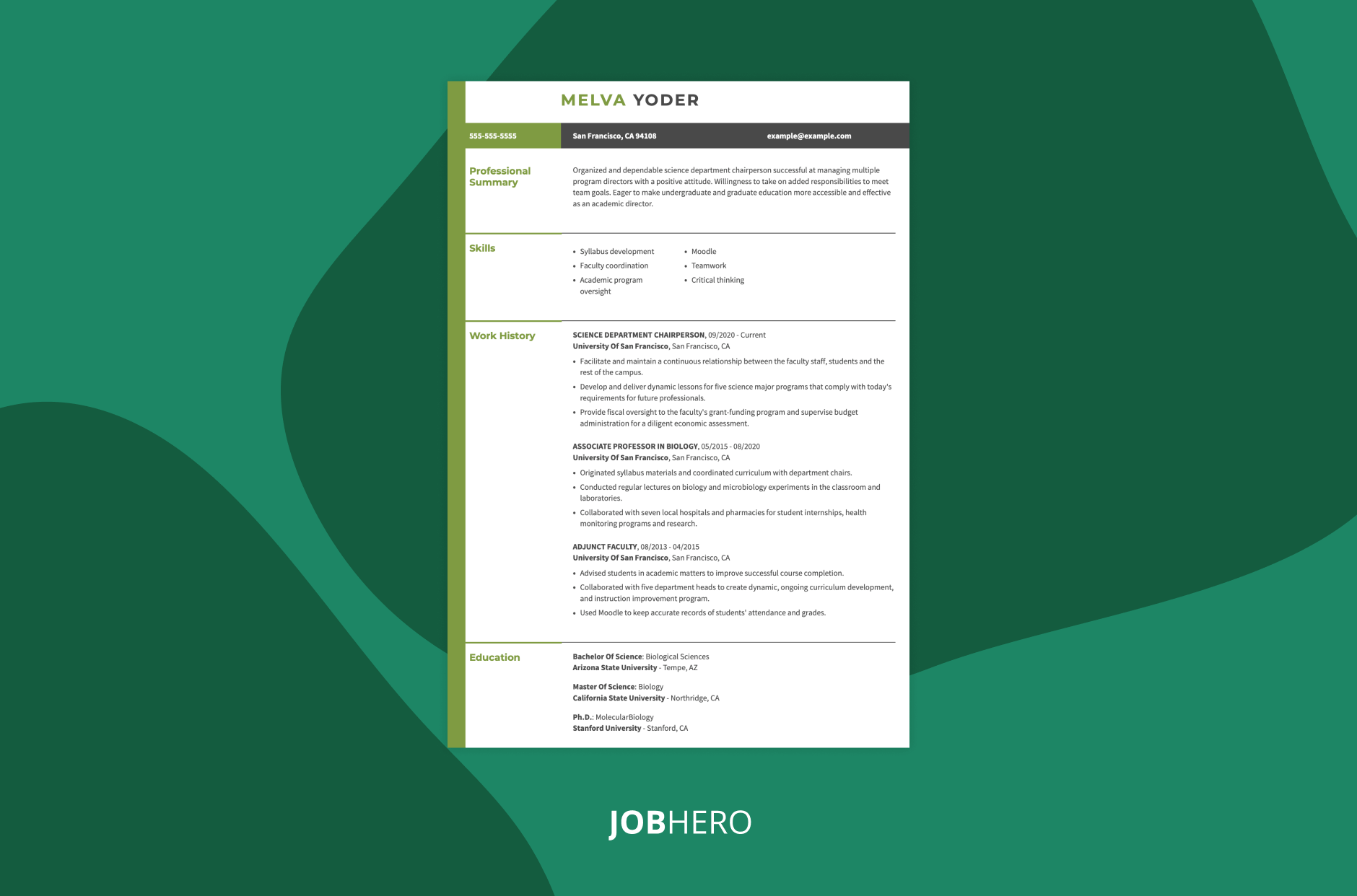A resume is a formal document used to seek employment, required primarily in the U.S. It provides recruiters with a solid overview of your qualifications, resume work experience, skills, education and top achievements.
It’s a more job-focused version of a CV. Your resume aims to convince employers that you are the ideal candidate.
A well-written resume markets your skills and accomplishments to show that you are a valuable asset to the employer. To stand out, use a format that aligns with your experience level. Formats are the way you choose to organize your credentials.
How you organize the parts of your resume will depend on your years of experience. There are three resume formats: chronological, functional and hybrid.
Each format has a specific strategy. For instance, the chronological resume shows a steady and consistent work history by placing your employment information in reverse-chronological order. This type of resume is ideal for candidates with experience of five years or more.
The functional resume shifts the focus from your experience to your skills. Since it doesn’t elaborate much on your work history, it’s great for entry-level job seekers and those with employment gaps.
A combination resume works best for applicants seeking a career change or with a great deal of experience and skills. This type of resume is also known as a combination resume because it combines the best strategies of a functional and chronological resume format. A hybrid presents both your experience and skills in equal measure.
When outlining your experience, use quantifiable metrics to demonstrate results. For industry-specific phrases and how to target your employer’s job description, we have a guide to writing a compelling experience section.
JobHero features a how to write a resume guide. To jumpstart your resume, use our CV Builder with unique resume templates to make your job application process hassle-free. Check this sample out:
Check this sample out:







